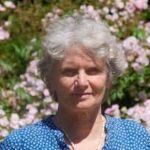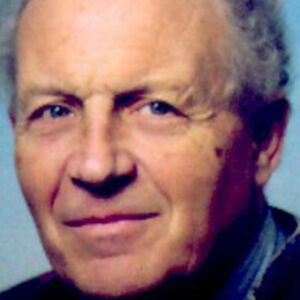by Deborah Collins, M.D., and Bert Esser

 In the following article the authors, a husband-wife team who live in The Netherlands, illustrate their way of blending regression therapy and homeopathic medicine. Collins is a homeopathic physician, who first trained as a traditional M.D., then trained extensively in homeopathy. Her husband, Esser, is (among other things) a regression therapist trained in the Dutch school. They find that their two approaches complement each other.
In the following article the authors, a husband-wife team who live in The Netherlands, illustrate their way of blending regression therapy and homeopathic medicine. Collins is a homeopathic physician, who first trained as a traditional M.D., then trained extensively in homeopathy. Her husband, Esser, is (among other things) a regression therapist trained in the Dutch school. They find that their two approaches complement each other.
By blending two disciplines, homeopathic medicine and regression therapy, we find a way of thinking and working which has proved very fruitful to us in helping “helpless” patients. We share an urge to go to the core of a problem with our patients, and to help them re-discover their own healing capacities. We realize that human beings have an innate healing power, which in illness has somehow been blocked or stuck, and that our primary duty as therapists is to assist in searching out and releasing those blockages.
In our separate fields as therapists we have found the same principles, though they may have different terms. Since we assume that readers of the Journal are well acquainted with the concepts of regression therapy, but perhaps not with homeopathy, we will first give a short outline of what classical homeopathic medicine involves.
The basic concept of homeopathy, “like cures like,” was formulated by Paracelsus and developed into an effective healing system by the nineteenth-century physician Samuel Hahnemann. Hahnemann protested against the “barbaric” medical practices of his time, which consisted mainly of purging and blood-letting, and proposed that healing should be quick, gentle, and durable. A series of “coincidences” led him to rediscover the law of healing: That which is capable of making one ill is also capable of curing, when applied in the proper manner. He noted that malaria, with its intermittent fevers, weakness, and diarrhea, is cured by quinine, which when ingested by a healthy person produces the same symptoms.
Hahnemann tested many remedies to discover their unique patterns of symptoms, and learned to apply these remedies to patients whose pattern of complaints exactly fit those of the remedy. At the same time he discovered a way of making the remedies less toxic, and much more effective, by extracting the “information pattern” from the crude substance, leaving behind the actual molecules of the substance itself. This occurs through a process of repeated dilution and shaking, until in the actual remedy there is often nothing left of the original substance as such. Although it may sound incredible to the scientific mind that something without physical substance can be effective at all (beyond a placebo effect), today we have become well aware that information can be stored and transferred by tiny chips. Hahnemann was far ahead of his time when he took this one step further, leaving the original substance behind and working only with its imprint.
In practice this has the effect of confronting the organism with a mirror of its own situation. It seems to work as a catalyst to stimulate the organism out of its “stuckness” and to provoke the healing force into responding in a healthy manner. To some extent the principles of “like cures like” are applied in the well-accepted theories of vaccination, where minute traces of viruses are used to stimulate the immune system to protect against the same illness.
However, in homeopathy the remedies are chosen on a purely individual basis, and every characteristic of the person is taken into account. It is just as vital to know extensively about the person’s mental and emotional state and his or her history as to know about the physical complaints. The homeopathic physician often goes to great lengths to ascertain that which is “rare, strange, and peculiar” in the patient, in order to find a remedy that exactly fits that given person, and not simply any person with a similar complaint. In this way, for example, one hundred people with migraine headaches may each be treated with a different remedy, fitting not only their own type of headache, but also their own character and body build, and their own reasons for the headaches.
Since Hahnemann’s time classical homeopathy has held its own and has gained wide popularity despite widespread attempts to ridicule it. In Europe and South America, as well as in Asian countries, it is widely used by physicians and lay-practitioners as well as the general public, and most pharmacies have a broad assortment of remedies. At one time homeopathy was also widely practiced in the United States, until laws that designated it “quack medicine” outlawed it. But it is making a comeback, although the general public seems still poorly informed. But homeopathy has proven its worth for one and a half centuries, using the same tried and true principles, and many new remedies have been developed.
It is often possible, and even advisable, for two different schools of medical thinking to work together with the common goal of helping patients to heal. Although homeopathy is steadily becoming more accepted, it has often been delegated a place in medicine for those patients with otherwise untreatable physical conditions. Less is known by the general public about the enormous possibilities for the treatment of mental or emotional disorders. The homeopath, in fact, makes no sharp distinction between a physical ailment or an emotional one, taking the whole state of the person into account and treating the emotional state at the same time as the physical state.
More and more patients seek homeopathic help for depressions, anxieties, phobias, and other emotional problems, avoiding heavy allopathic medication which they often claim only clouds the issue without solving the problem.
One might ask if the homeopathic physician does not in fact do the same as his or her allopathic colleague, giving medication for emotional states, perhaps less toxic, but nonetheless doing the work for patients instead of encouraging them to solve their own problems. I have given much thought to this matter, and in my practice have found that a carefully chosen remedy, touching the root of the problem, has the tendency to do just that: To encourage the patient to solve his own problems. By acting as a clear mirror to the whole being, the person seems to “awaken” from a stuck position, and is often able to take steps and make decisions that seemed previously impossible.
In this way it is very encouraging to work with a psychotherapist, or to utilize skilled homeopathy as an important component of a psychotherapeutic treatment. I emphasize “skilled homeopathy” as it takes much training and experience to work accurately and effectively in this field. It is also necessary that the psychotherapist be equally well-trained and skillful. But given two such people, the results obtained by working together are priceless.
 I continually refer to “the whole patient” and to “the root of the problem,” without which a homeopathic treatment can be just as superficial as any other. And this is where the bridge with regression therapy comes in. What we usually see of a person is only the surface, and it would be tempting to treat only that which is there before us, without having to go into the depths of discovering why it is there. Often this is possible, as not all problems are necessarily deep or mysterious. It is, for example, sometimes enough to treat a person with hyperventilation with Aconitum, if it is evident that the origin of the complaint comes from a shock in which the person felt sure that he or she would die. Aconitum “mirrors” the state of fright and shock, and somehow reminds the person that he is no longer in those circumstances. The body need no longer produce palpitations and excited breathing, the adrenals need no longer pump adrenaline as though the person had to fight or flee. There is clarity of mind again, necessary to put the train of events in perspective.
I continually refer to “the whole patient” and to “the root of the problem,” without which a homeopathic treatment can be just as superficial as any other. And this is where the bridge with regression therapy comes in. What we usually see of a person is only the surface, and it would be tempting to treat only that which is there before us, without having to go into the depths of discovering why it is there. Often this is possible, as not all problems are necessarily deep or mysterious. It is, for example, sometimes enough to treat a person with hyperventilation with Aconitum, if it is evident that the origin of the complaint comes from a shock in which the person felt sure that he or she would die. Aconitum “mirrors” the state of fright and shock, and somehow reminds the person that he is no longer in those circumstances. The body need no longer produce palpitations and excited breathing, the adrenals need no longer pump adrenaline as though the person had to fight or flee. There is clarity of mind again, necessary to put the train of events in perspective.
In many cases, however, we are confronted with only the tip of the iceberg, and much of the necessary information is under water, in the subconscious. Sometimes regression brings us to events in this life, to the childhood or prenatal period. And often it brings us farther into the past, into past lives which have their effects on the present life. For both the regression therapist and the homeopath, the length of time itself is irrelevant. The only thing that matters is that the events are relevant to the present situation of the person in question. Homeopathy and regression therapy are in fact amazingly similar in their approach, if one looks beyond the surface. Both try to treat the source, not the symptoms, and both do so by bringing the patient in contact with the problem, provoking a healing catharsis, and stimulating the innate healing capacity of the person.
To my husband and me it has long been evident that we have actually been doing the same work, each from a different angle, and it has always seemed perfectly natural to pool our resources. The following two cases have intensified our curiosity, and have led us further into researching the possibilities for cooperation.
Case One
This was a woman of 42, who had been under various treatments all her life, due to the complexity of her problems. She had been ill since her birth, was small and weak, and was continually on restrictive diets, as she had allergies to most foods. Among other complaints she suffered from M. Sjogren, a lack of production of tears, saliva, and sweat. She had extreme photophobia, continual chilliness, and exhaustion. Conventional doctors had given up on her, finally considering her complaints to be mere attention-getting devices. Various alternative therapies helped her to develop insight into herself, and to use her intuition, but her physical complaints remained.
When she first arrived in my office, she was accompanied by her husband, and she looked so deathly ill that I assumed that she had come for herself, and proceeded with the intake. She was pale and thin, icy cold with blue extremities, and had sunken eyes and cheeks and very short hair. Although I didn’t say so, my first impression was that she was terminally ill. She looked like someone who had just escaped from a World War II concentration camp. She must have sensed my dismay, as she said that most people thought she was about to die, but that the actual patient was her husband. Her own impression was that her complaints stemmed from a past life, and I referred her to my husband for regression.
During the second regression session she experienced herself as a five-year-old Polish boy, apparently during World War II. The boy gave vivid descriptions of the tension in the family as to whether or not they should flee, and finally the long journey in the overcrowded train. He told of coming out of the train and being nearly blinded by the bright lights, and of losing track of his mother while being pushed along in a crowd of people. Clutching a rag doll for comfort, the little boy found himself in a line waiting for a shower. He was pushed up against the naked bodies next to him, unbathed after many days in the train, and the stench sickened him. He saw a hand dropping a substance through a small opening high on the wall, and then people began to fall, crushing him. During the session there was a dramatic catharsis and much choking.
After the little boy’s death, the patient was brought to the “place of review” in the interlife, to evaluate the past life and its effects upon her present life. She was asked if, and how, the two lives were related. She repeated over and over “gas, gas.” Her photophobia had to do with the extremely bright, blinding lights, and her fear that precious things would be taken from her related to the rag doll, the little boy’s only remaining possession, being taken away.
In other sessions she learned what the other meanings of this short life had been. She had had several victim lives: For instance, as a gypsy girl in the Middle Ages who was beaten to death when she was mistaken for a witch. It took more sessions to come to the lives in which she herself was the perpetrator, doing to others that which was later done to her. She saw herself as a young man from a poor family during the French Revolution. He worked his way up to a high position near the leaders of the Revolution, but was cruel and merciless in using his power. In another life she saw herself as the mother of her present mother, whom she has always found hard and cold. In that life she herself was an uncaring parent, leaving her daughter to the care of maids while she lived a high life.
The series of sessions helped the patient to find some peace in herself, instead of inwardly raging against the injustice of her plight. She recognized a core issue of persistent haughtiness in several of her lives, in those of the gypsy, the rebel, and the cold mother, and realized that in her present life she was learning humility. She recognized that she needed to learn compassion, and has learned to look at her situation with her mother in a different light. Her Auschwitz life has helped her to redeem karma in an accelerated way, and reliving it has helped her to permit herself to become healthier in this present life.
However, although she had gained much insight and was emotionally more stable, she remained tired and weak. My husband and I decided that if “gas” from the Auschwitz life was at the root of these complaints in this life, we could apply the homeopathic principle of “like cures like,” and give her a homeopathic dose of the same gas. This turned out to be a remedy already available. Since her first dose, more than a year ago, she has been improving rapidly and dramatically. When a relapse occurs she repeats a small dose, with good results. By now her hair has grown and is thick and shiny instead of thin and wispy, she is eating increasingly more foods, and is gaining weight for the first time in years. The extreme chilliness and blue extremities have improved considerably, as has her ability to produce tears, sweat, and saliva. Her general energy, including her sexual energy, are definitely on the mend.
Looking back, she says that she was not surprised to find herself a concentration camp victim. Even though her own rural Dutch family was not personally affected by World War II, as a child she was obsessed by it. She recalls asking all she could about that time, to the bewilderment of her family. Her favorite pastime as a child was to dress up her doll as though it would have to survive hunger and other hardships, putting layer after layer of clothing on it. She recalls childhood flashbacks of her experiences in the camp.
Commemoration Day in Holland, the 4th of May, has always meant much more to her, even as a small child, than to her family, and she recalls feeling angry that family members could consider it just another holiday. Although she has lived all her life in a Protestant community and is a Protestant herself, she says she has always had an irresistible sympathy toward  Jews and the Jewish faith. Her healing, and her search for herself, goes on, and she plans a trip to Israel in the near future.
Jews and the Jewish faith. Her healing, and her search for herself, goes on, and she plans a trip to Israel in the near future.
Case Two
The second case is of a woman who has never actually been under regression and who perhaps will never be. For the purposes of successful cooperation between the two fields, even the concept of past lives can sometimes be enough to clarify a situation, without the need for an actual regression. This woman, 38 years old, had been under my treatment for several months, with little success. Like the woman in Case One, she also had multiple complaints, the chief being ulcerative colitis. She had extreme diarrhea and abdominal pain, and had to use the bathroom frequently, often 20 or 30 times during a night.
Besides this, she had a continual fear of dying and leaving her children behind. For someone with this illness this would not be a strange fear; what was strange was that she had had dreams about this since childhood. She had a recurring dream that she was the mother of two children, continually worried about protecting them. In the dream, a car came into her street and men went from door to door. Although in her dream she did not see people being taken away, she knew that this was the case. She hid her children under the floor boards and told them to be quiet when the men came to the door. The dream always ended when the men came to the door and she said “All right, take me, if you must take someone,” hoping that her children at least would be saved.
All her nightmares had to do with war situations, for instance the recurrent dream that she had left her city for a short while, and was being warned by someone that she could not go back because it had been taken over by the enemy. In her waking life she had a constant fear that war would break out; even going to a supermarket or a bank was fearful, as she always expected someone to appear with a machine gun. All her life she had felt hurried, and felt better when she was around rushing activity.
After several unsuccessful attempts to treat her by homeopathic remedies, I decided to look at her situation as if it were caused by a past life. She, much like the woman of Case One, had a passion to know about World War II. As a child she had wanted to become a Jew, something incomprehensible to her Catholic family. She had an irresistible urge to visit the Anne Frank House in Amsterdam, and waited for hours in line until she finally got to the place where she felt she “needed to be.” For her, too, Commemoration Day is almost holy, although her family had no special connection to the war.
Her preoccupation with World War II, and with Jews and Jewish war victims, reminded me of the woman in Case One. Her physical complaints also, as well as her fears, fit the pattern of the same remedy. Interestingly, this remedy includes in its pattern not only the symptoms of her physical complaints, it also includes the emotional state and fears which would be logical for someone about to be taken away to a camp. In the “provings” of this remedy, people reported feeling many of the same fears she suffered from.
The woman, who had felt so near to death in this life, is now feeling much better, both physically and mentally. Not only she herself, but her family and friends as well notice a dramatic change. The diarrhea is gone, and for the first time in many years she is able to sleep through a whole night without having to get up at all. The cramps which used to bend her backwards in bad have ceased since she began the remedy, and have not returned.
But she finds it especially strange that her attitude toward her children has changed so much in such a short time. Whereas she used to panic whenever the children were not in sight, and was continually concerned even when they were in sight, she can now let them go. She used to plan every party for the children or for her husband as though it would be her last one with them; now she relaxes more and enjoys the events. She can now read a book through without jumping up every other sentence to see where her children are. Changes that one might expect, or hope for, after many regression sessions have taken place after one dose of the remedy, by making use of the image of her possible past life. Interestingly, although she herself has provided all the information that leads one to assume that she had a past life as a Jewish mother, she is quite skeptical of the idea of past lives! She says “I just don’t know what to make of it, I’m simply glad that I’m better.”
We have many more cases which confirm the useful blending of homeopathy and regression. The two presented above illustrate two cases in which, although the individual symptoms were somewhat different, the homeopathic remedy was the same, and the past-life experiences somewhat similar. It is impossible to know which of the two approaches had the most healing power: They both had healing power, and both were necessary for eliminating all of the symptoms.
Hopefully this work can inspire others to join forces as well.
